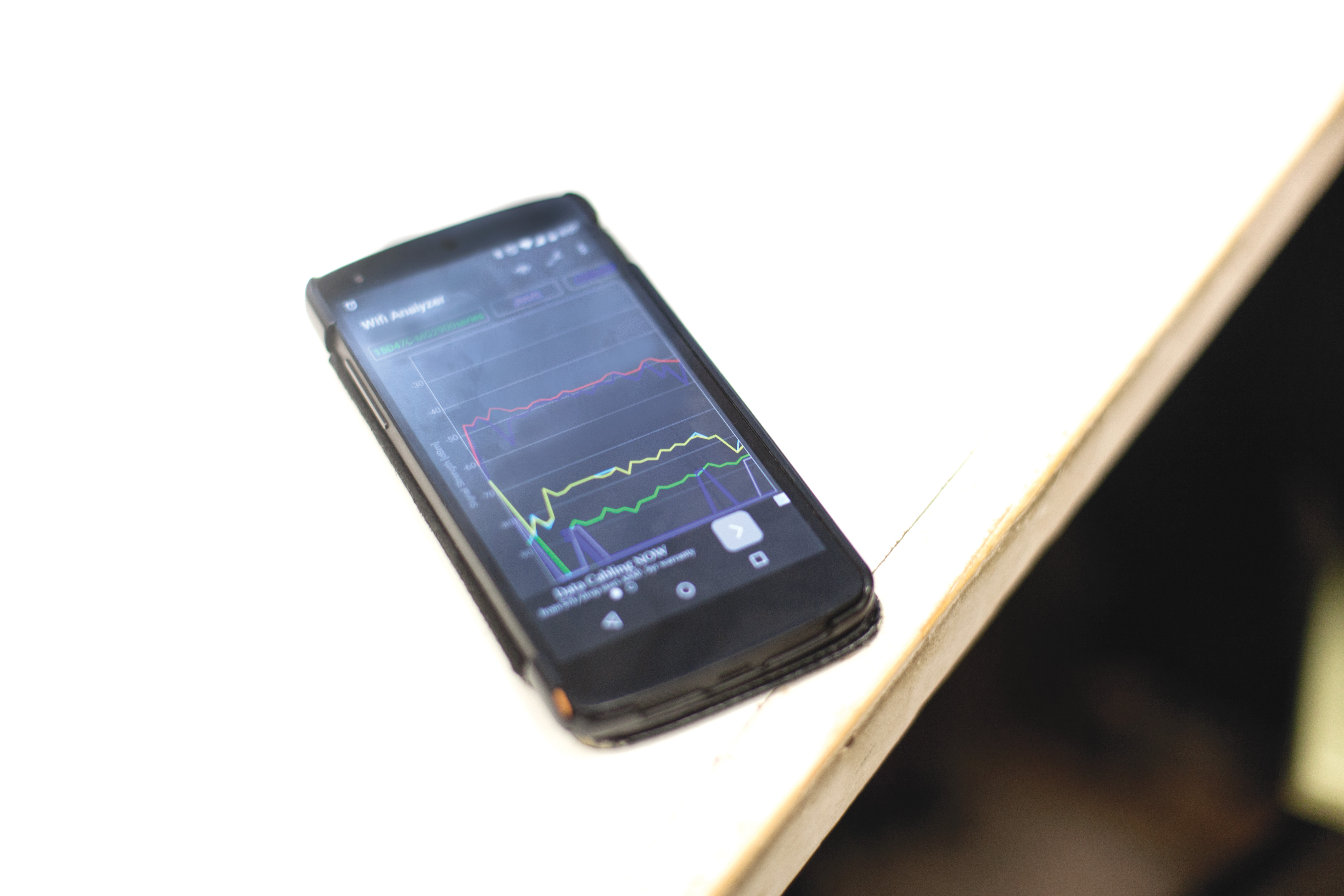Laurier’s Wi-Fi hot spots exposed

ICT creates “heat maps” as a way to show students the best areas for Internet connection on Waterloo campus
There’s good news for students who constantly struggle with their Internet connection — Wilfrid Laurier University’s information and communications technology solutions is helping to make Wi-Fi more accessible on campus.
Laurier’s Information Communication Technology has recently launched “heat maps” as well as a list of places on campus which locates WiFi access points.
Ken Boyd, director of ICT solutions, explained the heat maps show the access points in blue so students know where they can get the best Internet connection in any classroom or study space on campus.
“You need to be as close to [access points], or you want to be as close to it as possible to guarantee a connection. The further away you go, the weaker the signal,” said Boyd.
Boyd explained before creating the heat maps, ICT had to plan where the access points should be placed and how many students will be in a room at any given time, as well as what they’ll be using Wi-Fi for.
“That tells us the information we need in order to place the [best] access points, so there’s some thought behind this,” he said.
Boyd noted the ICT department has been constructing their access points for 20 years, when Wi-Fi first became accessible. Just last year they increased WiFi presence, but they say they’re still behind.
ICT’s list of classrooms and capacity were also placed around campus in the beginning of the fall term.
“Our goal was to have it all ready to go before students and professors were in the classroom,” said Allison Dias, project and administrative coordinator at ICT.
For students who constantly search for the best Wi-Fi spots, room 201 in Bricker Academic is the way to go, with a 452-person capacity, where the access point can actually serve 495.
If an area seems to have poor connection, Boyd explained the space can be over capacity or it could be an individual’s Wi-Fi hotspot counteracting the strength.
“When you Wi-Fi hotspot on your smartphone, that actually robs the ability to connect with other people,” he explained.
Boyd and Dias said ICT is also looking to improve their services and communication on campus, such as looking into the access points at Willison Hall residence.
“The other things that we’re spending a lot of efforts on in terms of improvement is our communications about helping students troubleshoot without having them go to the Service Desk,” said Dias.
Although massive investments have been made, ICT Solutions is constantly improving their systems on campus.
“We made a massive investment through the summer, like many hundreds of thousands of dollars both here and in Brantford, we’re in pretty good shape I think at this point,” Boyd echoed.
For students who want to be constantly aware of strong or weak access points, there’s an app for that. Boyd recommends students download Wi-Fi Analyzer on their cellular devices or tablets to see how accessible connections are on campus.
“There’s no reason why every student shouldn’t have this because it’s free and it shows you in real time how Wi-Fi is working.”
If students struggle with the university’s Wi-Fi, ICT recommends to contact the Service Desk
“I mean we have our eye on it and we’ve got lots of things that they can measure,” said Dias.


